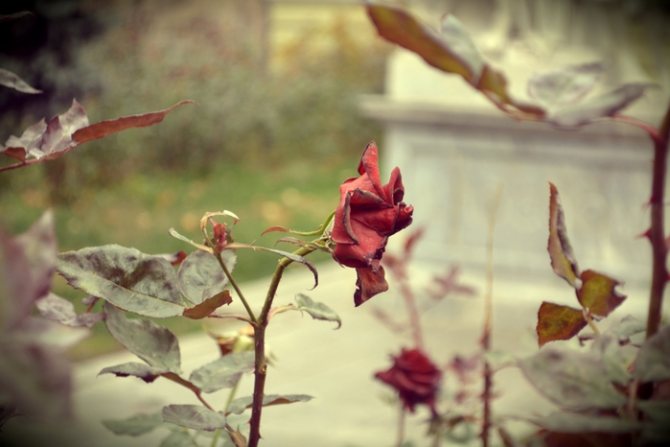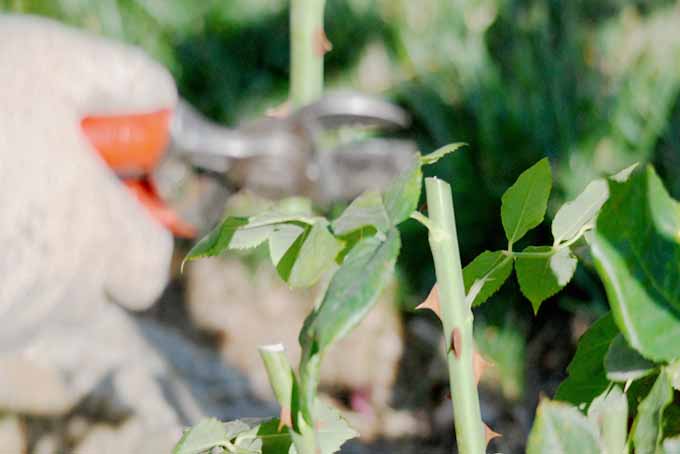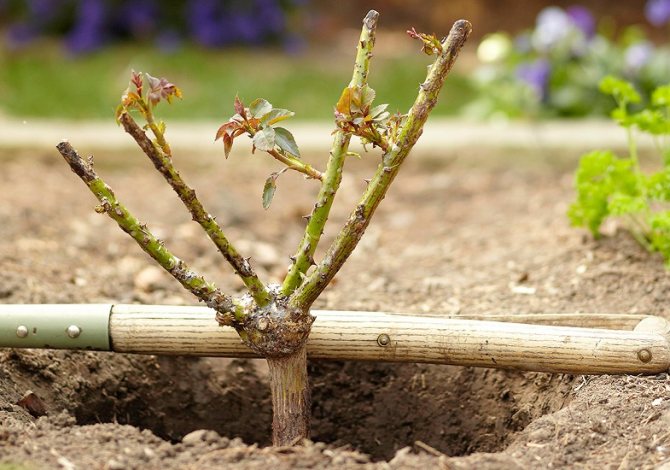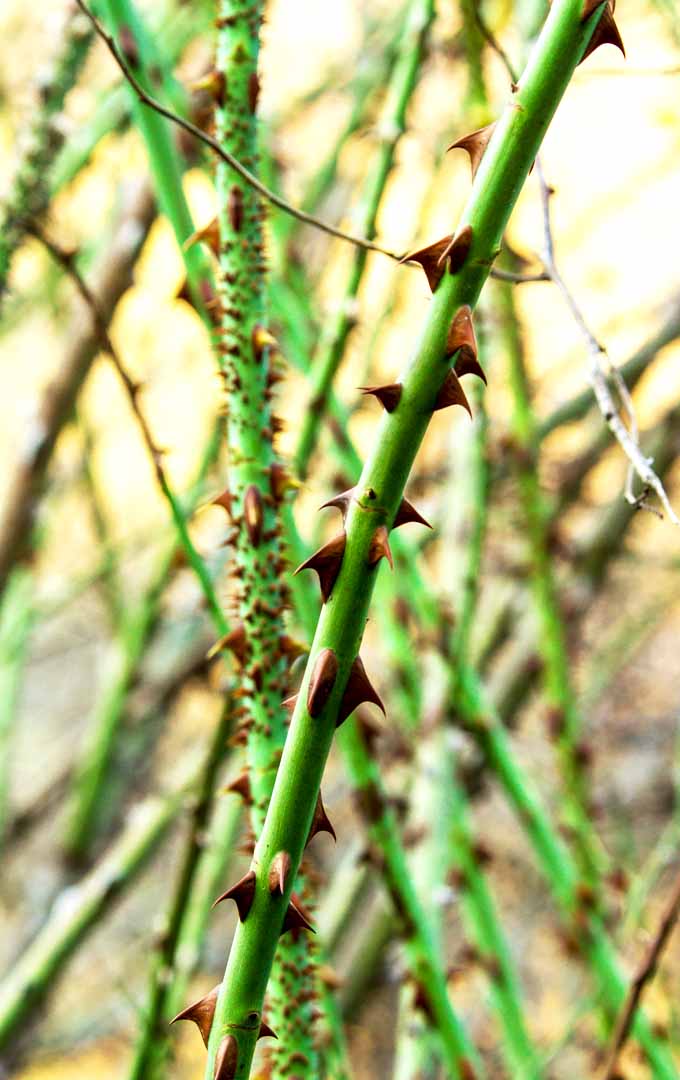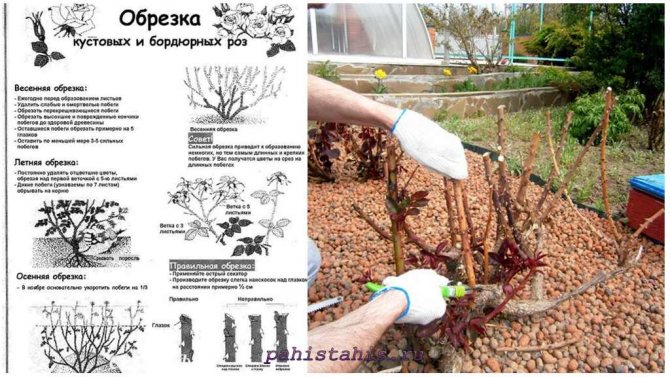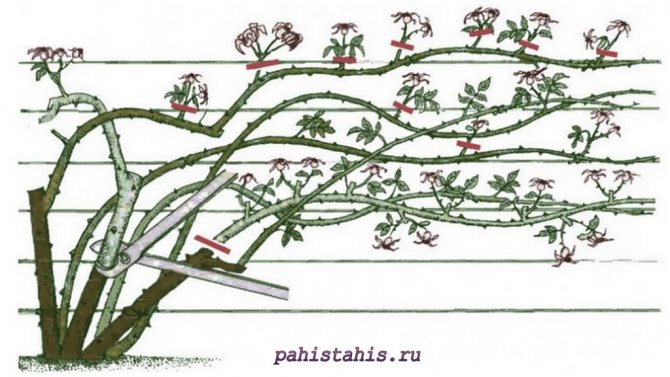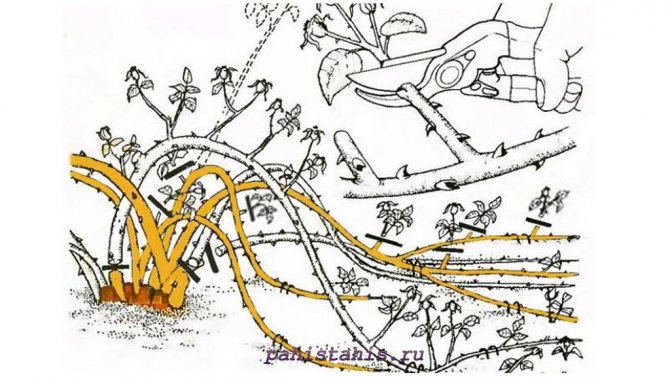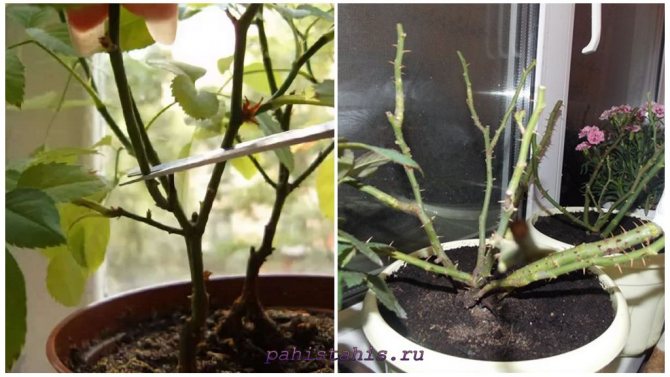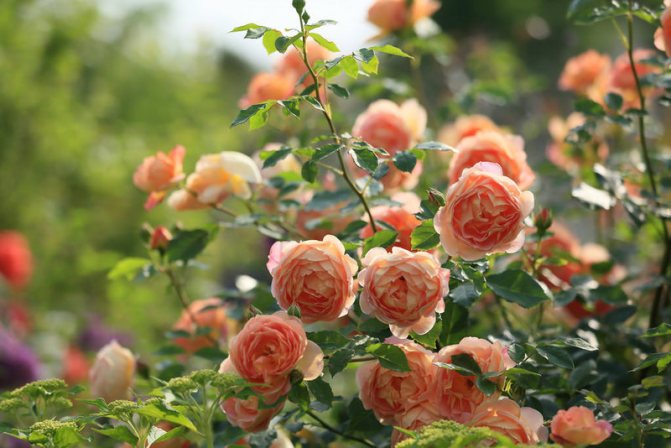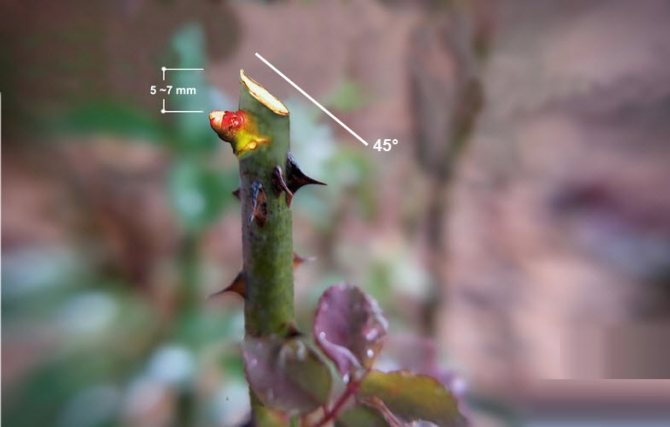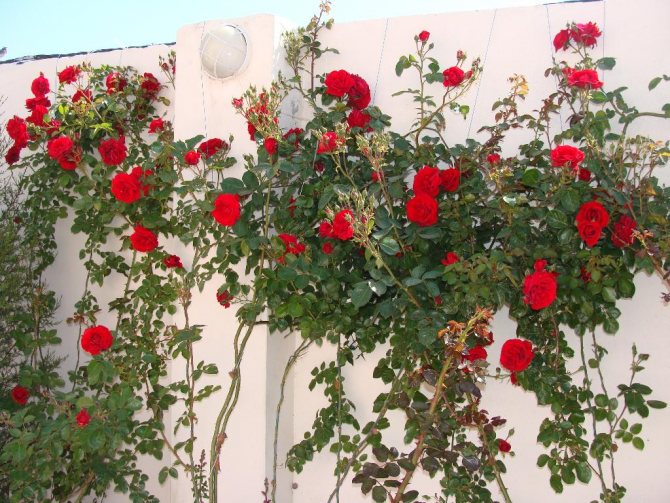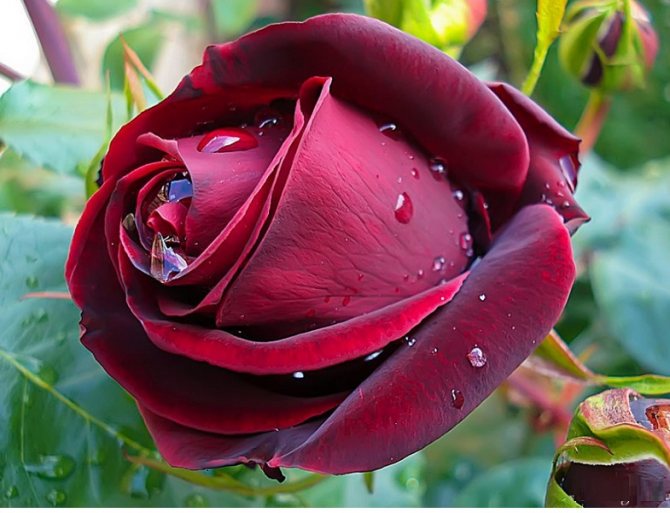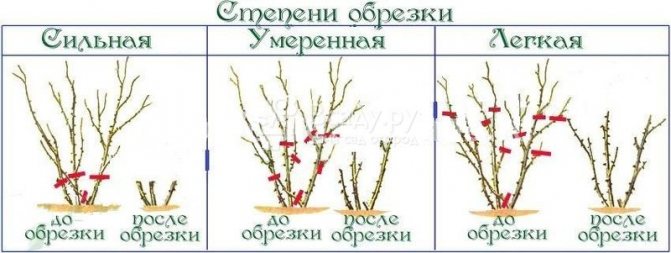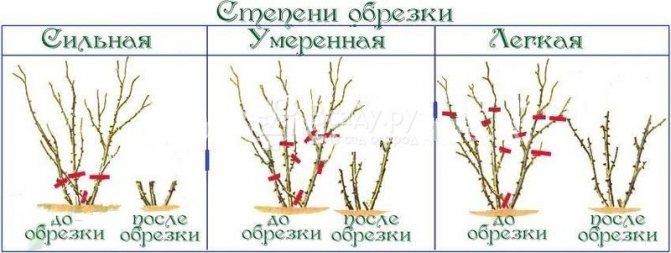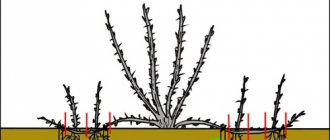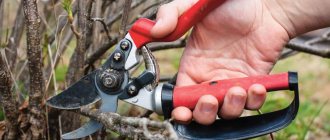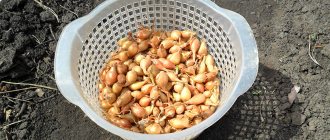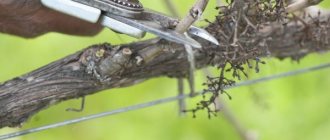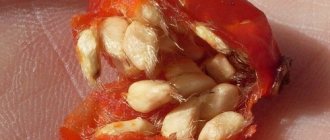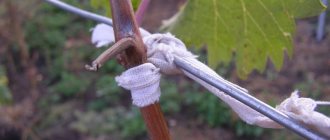Pruning roses stimulates growth and results in more flowering and a healthier plant in general. Do not be afraid to cut the rose - in the spring, the buds wake up along the entire length of the shoot, the bush will survive in any case, even if you cut a little more.
The basic principles of pruning roses are the same regardless of the type of rose, but the timing of pruning, the amount to remove, and the purpose vary slightly depending on the type. Here's how to prune roses.
What tools do you need to prune roses? Manual pruning shears (bypass pruning shears are best), pruning saw, lopper, gloves, watering can, water soluble plant feed.
We provide beauty and health to the queen of the garden
In novels, they often write “how beautiful the neglected garden was”, but in practice everything is not so great. Gardeners know that in just one growing season, a rose bush can lose a significant part of its attractiveness, and then health. Regular and correct pruning of rose bushes is aimed at prolonging the life of the queen of the garden for a long time and making her a real decoration of it.
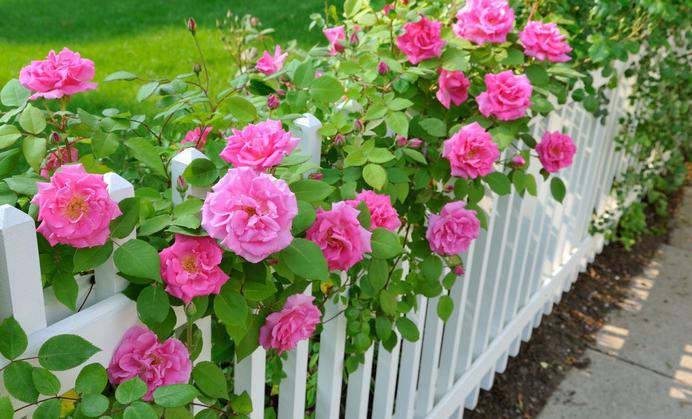
Hybrid tea roses
Roses in this category must be pruned in the spring. When performing this event, up to five last year's shoots are left. The more powerful the branch, the healthier the bush will be. More buds appear on such stems than on weak ones.
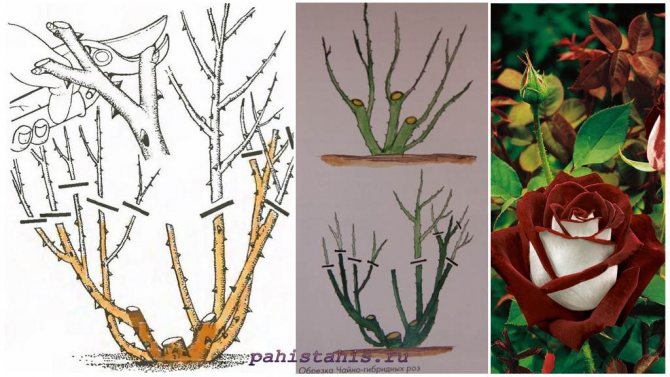

Pruning hybrid tea roses in spring
Young rose bushes are shortened by 15 cm when planted in open ground. In this case, 2-4 buds are left on the branches. Adult plants are cut to 20-25 cm, leaving 5-6 buds on the shoots.
Important !!!
Roses of this species bloom on young shoots that have appeared in the current season, so shoots that are more than 2 years old can be cut off without any fear.
Pruning young shoots will make the flowering more lush and beautiful.
Auspicious days for pruning roses in spring-summer 2019
You should start pruning roses after making sure that the night frosts have already passed, but the sap flow of the plant has not yet begun. Cropped roses, which means they woke up ahead of time, and caught even with a slight frost, are unlikely to be able to bloom later. If you cut the plant after the start of sap flow, then there is a high probability that the weakened rose will bloom reluctantly, sluggishly.
In addition, it is important to take into account the lunar cycles, which can contribute to the active growth of pruned roses or, on the contrary, prevent them. The most favorable days for pruning roses in the spring-summer of 2020 according to the lunar calendar: April 2-4, 13-16, 21-23; 1-4, 17-20, 29-30 May; June 1, 13-16, 25-29; 10-14, 22-24, 26, 29-31 July; 9-10, 19-22, 26-29 August.
Why prune roses
Indeed, does a luxurious bush with a lot of flowers look bad? Of course it's good. Large elegant bushes can not only decorate the site, but also radically transform it, covering places with leaves and flowers that are not entirely pleasant for contemplation. But after all, the adjacent territory becomes well-groomed and beautiful not because the rose grows as it pleases, but because it was cut on time and correctly. So why and how to prune roses in spring, summer and fall? First, about why.
First.
At the time of planting, the seedlings are pruned so that, by reducing the aerial part, "direct" the maximum amount of nutrients to the root system for its rapid and high-quality rooting.
Second.
In the next 2-3 years, removing the excess and leaving the strongest young growth, the bushes are given the desired shape, that is, the plant is formed. In later life, the bush is gradually "tweaked" every year, but the main work is carried out in the first few years after planting.
Third.
At the beginning and at the end of the season, the roses must be prevented, that is, the stems that are unsuitable for further development or that can harm a healthy bush are removed.
Fourth.
In the spring, pruning is removed old and stimulates the growth of young shoots - future flower stalks.
Fifth.
Proper trimming in summer allows some types of roses to bloom a second time.
Without pruning, it will also not work to prepare the bushes for wintering. Putting plantings in order before frost reduces the risk of freezing. A separate conversation is the old bushes. Growing near the house, but in "wild" conditions, that is, without human intervention, after a certain number of years without rejuvenation simply die out.
"Hairstyle" for a rose bush: choose the type and length
There are several types of spring pruning roses, depending on its purpose:
- sanitary, in which broken, poorly developed shoots that have not survived the winter are removed;
- forming, the holding of which will provide a good shape to the bush, its long flowering due to thinning, that is, the removal of branches shading each other;
- simplified, in which the shoots are cut to half their length, which allows you to get larger buds than usual;
- anti-aging, may be required in advanced cases, to restore the bush.
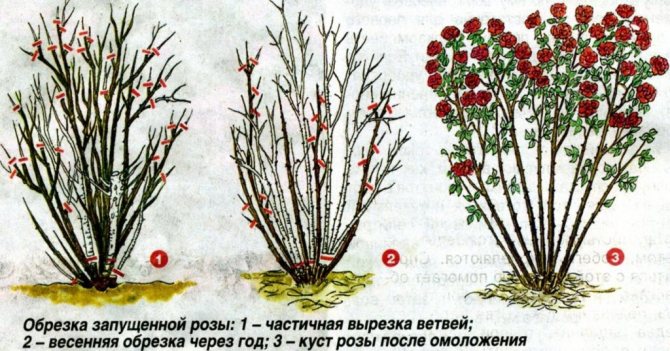

Form: Rejuvenating spring pruning of an old bush
An important factor is the degree of pruning of plants:
- Strong (short) - chosen for either young or neglected or old bushes. In its production, one should focus on the height from the ground (14-15 cm) or 3-4 buds. Suitable for polyanthus, floribunda and hybrid tea varieties.
- Medium (moderate) - produced when it is necessary to stimulate flowering. In this case, the stems are shortened between 5 and 7 buds. Priority for remontant species.
- Weak (light) - used if it is necessary to remove the tops of the shoots, however, it should be remembered that too frequent repetition of light pruning will lead to rapid pulling of the stems. Pruning is done at the level of 8-12 buds. Used for vigorous, climbing varieties.
- Combined - the most common type of pruning in practice, due to which it provides a spectacular appearance and no interruptions in flowering.
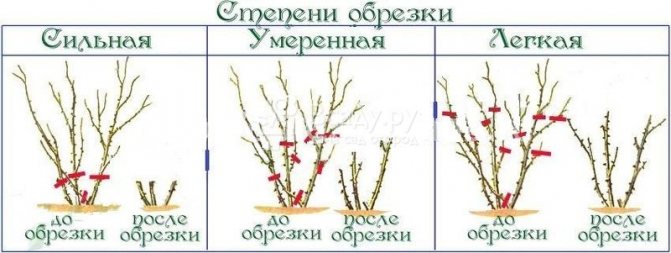

General guidelines for pruning
Flower work can be done as soon as the weather is warm. Since the regions differ in weather conditions, it is advisable to focus on the period when the threat of night frosts has passed.
Experts identify several types of pruning, which are used in spring work with roses of any varieties.
- Sanitary - old, diseased or dead shoots are removed. The branches must be carefully examined: green - alive, black - dead. You can focus on the shade of the cut - a brown core is found on the dried stem. In order not to lose the entire stem, you can cut it in separate sections - until a cut with a white core appears.
- Anti-aging is carried out to prolong the life of the bush - old branches are removed to stimulate the growth of new shoots. A rose can grow in one place for about 20 years. Therefore, in the spring, old, weakly flowering branches are removed. As a rule, these are stems older than 3 years of age, having a green-brown tint and a dried appearance. The branch is cut at its base, pruning is done on a ring.
- To give the bush a beautiful shape, formative pruning is done. Cut out weak shoots at the bottom of the bush that will not bloom. Remove competing stems - leave the strongest of two / three. Also, be sure to cut out the branches growing inside the bush, thickening the plant and interfering with the penetration of light and air.
- Stimulating pruning is carried out selectively - if the rose bloomed weakly or the bush stopped growing.Radical "trimming" of the bush will promote the rapid growth of shoots. In this case, weak shoots shorten more, and strong ones less.
Slices are made above the formed external buds (approximately at a distance of 0.5-1 cm). Under this condition, beautiful vase-like forms of bushes are formed, since shoots will begin to appear along the outer contour. The branches are cut at an angle of approximately 45 °, with the higher side of the cut over the bud.
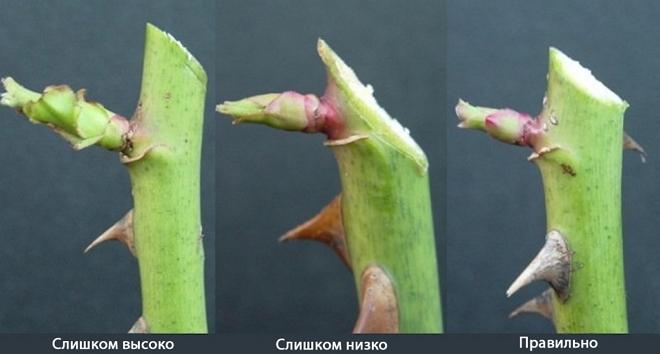

Correct rose pruning
When forming bushes, the variety of roses is taken into account and therefore different work is carried out:
- shoots of park, climbing varieties are poorly cut off. As a rule, only the tops of the stems are removed;
- when growing hybrid tea varieties, floribunda and grandiflora, medium pruning is done. 3-6 buds remain on the stem;
- strong pruning is used for miniature, polyanthus roses. Shoots are left with 1-2 buds.
Read also: What helps bee pollen
Spring pruning of roses should not be neglected. This procedure is the key to early and abundant flowering, the full development of beautiful bushes.
Pruning a running rose


Gardening tools are an important part of maintenance
To trim you need:
- secateurs with one cutting blade for thin and medium shoots;
- secateurs with two cutting blades for powerful stems;
- garden shears with long handles for pruning in hard-to-reach places;
- garden saw for working with lignified shoots and hemp;
- garden knife;
- thick gloves.
The rules for choosing a tool are simple: the cutting edges must be very sharp and clean. A blunt instrument can severely damage the escape and even lead to its death. You can disinfect production tools in a strong solution of potassium permanganate or copper sulfate.
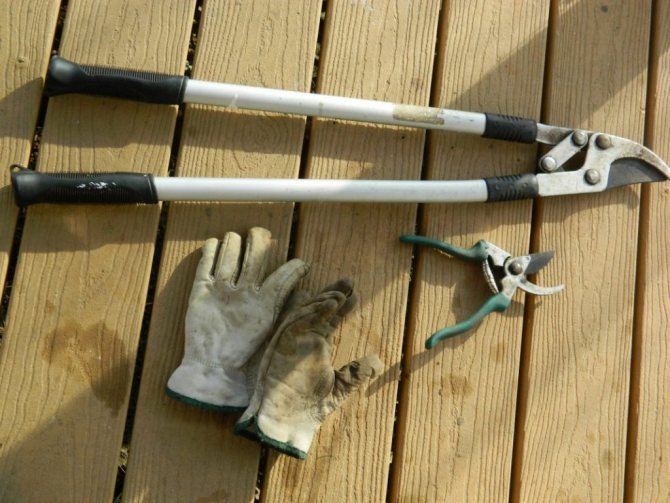

Leaving after spring pruning
Pruning is a real stress for the plant. To prevent the undesirable consequences of this event, you need to provide the roses with proper care:
- Roses after this procedure should be watered abundantly, and after watering, to prevent the formation of a hard crust, you need to loosen the ground.
- Seven days after pruning, preventive treatment against diseases and pests is carried out. For these purposes, you can use copper sulfate.
- After this procedure, you need to mulch the soil. For this purpose, you can use humus, peat. This event will reduce the number of watering and improve the quality of the soil.
- To stimulate the growth and development of the culture, the rose needs to be fed with complex fertilizer.
Rose is a very demanding but very beautiful plant. In order for it to bloom magnificently and decorate the garden, it is necessary to provide it not only with careful care, but also proper pruning, which is best done in spring.
What grade, such a "haircut"
Before proceeding with the pruning procedure, it is necessary to remind you of the need to follow the correct cuts technique. The cut should be made at an angle of 45 degrees, about 1 cm above the kidney, directed outward, while making sure that it is not germinated.
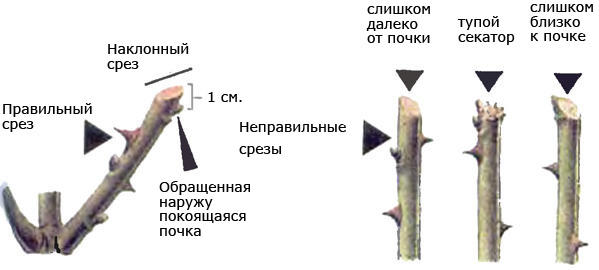

Depending on the variety of roses, different types of spring “haircuts” are used, but the general sequence is always the same:
- The material with which the plants were covered for the winter is removed.
- The soil under the bush is cleaned and the bush itself is examined for general condition and health.
- All damaged shoots that have not survived the winter are cut out.
- Wild growth is removed at the root, which differs from cultivated shoots in a light green color.
- The actual "haircut" is carried out with the choice of the required degree of trimming, at which:
- all improperly growing stems are removed, especially if they are directed into the bush, stems, and central shoots are thinned out;
- young shoots and lateral branches are shortened or pinched;
- Cuts of stems are processed.
Video: General principles of spring pruning of roses
Climbing rose
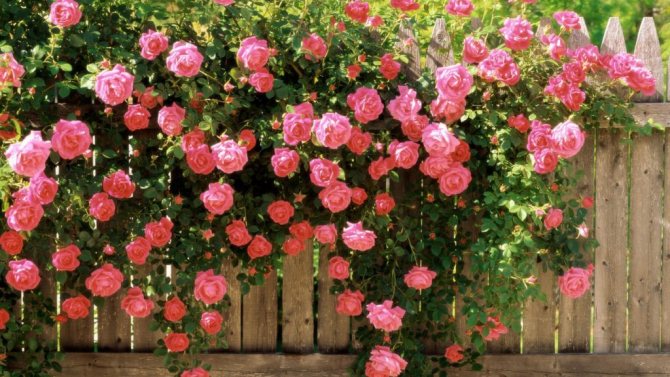

Powerful stems of one of the favorite decorative types of roses, climbing (climbing), in the spring are cut at such a height that is required to give the bush the desired shape. Lateral shoots can be shortened between 2 and 4 buds. Extra stems are also completely removed, preventing the bush from thickening.
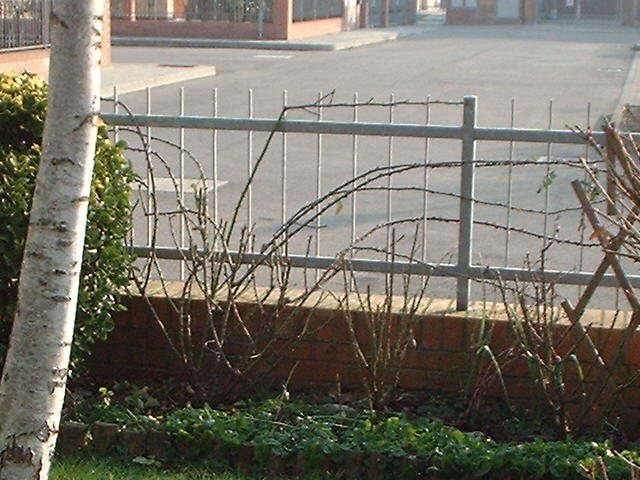

The peculiarity of pruning roses of this type is from the edge to the center, that is, the outer stems are first cut, gradually moving to the central ones.
Floribunda
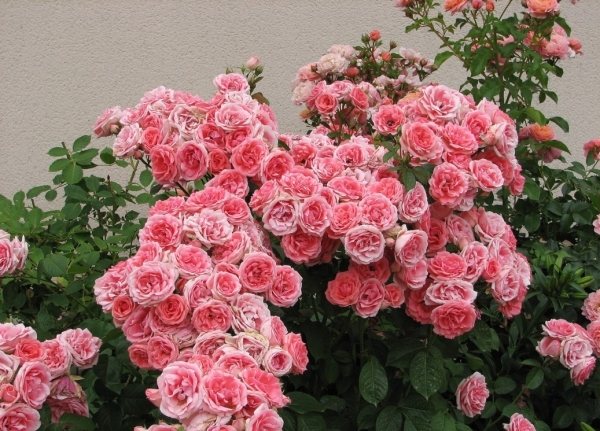

Floribunda roses require a balanced combination pruning to achieve their luxurious appearance. If the bush is pruned weakly, then there is a high risk of growing a voluminous bush, in which both stems and flowering will be weak, but strong pruning, in turn, can lead to depletion of the bush. The combination of the method consists in shortening the adult stems, leaving 3-5 buds, thereby stimulating early flowering, and cutting off the basal annuals by about a third, leaving 2-3 buds. Age (more than 4 years old) stems in the center of the bush are removed completely. In Floribunda roses, it is also important not to forget to remove the root shoots throughout the season.
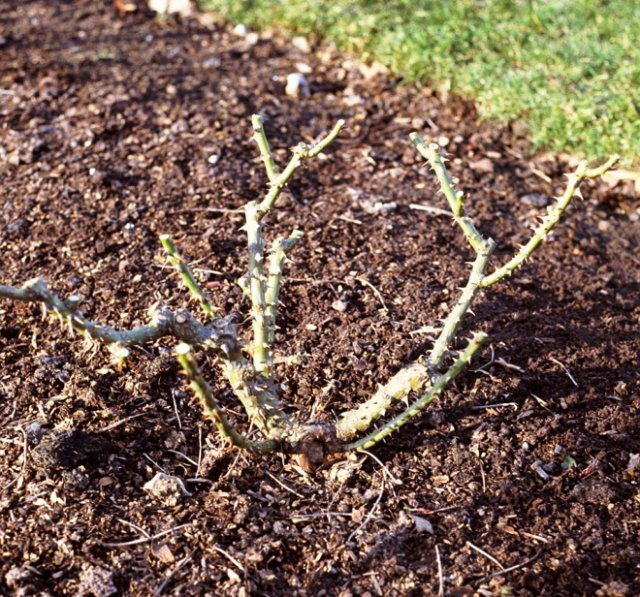

Bush


Shrub roses are characterized by an average degree of pruning, aimed more at forming the desired shape of a given size. At the same time, they try to thin out the center as much as possible to improve natural ventilation and facilitate the access of moisture.
After removing diseased and damaged shoots, young and healthy ones are pruned at a level between 1 and 2 upper buds, depending on how voluminous they want to see the bush.
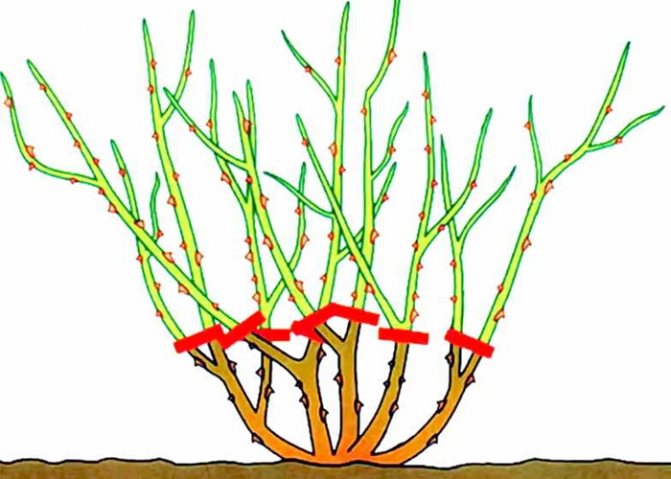

Hybrid tea species
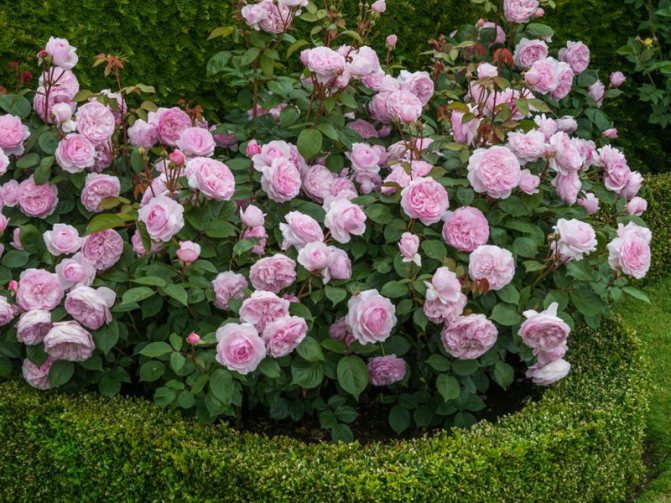

It is customary to give such bushes the shape of a ball. All varieties of this type of roses are characterized by the formation of buds on the shoots of the current season, therefore, a strong degree of pruning is chosen for them. If the bush is young (up to 4 years old), then the pruning of all shoots is carried out at a height between 2 and 4 buds, subject to a distance of 15 cm from the ground level. On adult bushes, a cut is made at a height between 4 and 6 buds, the distance to the ground should be at least 20 cm.In order to prevent thickening of the bush, excess shoots are completely removed from its center.
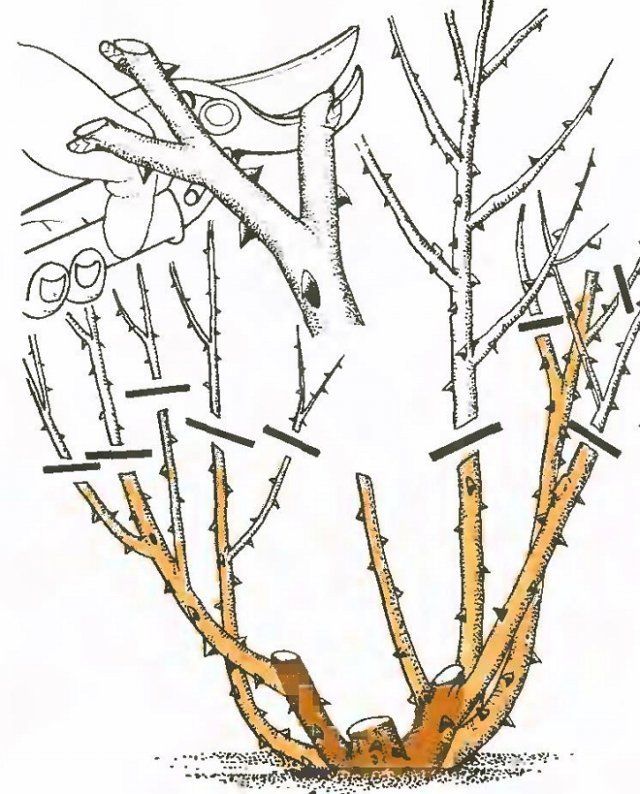

Ground cover roses
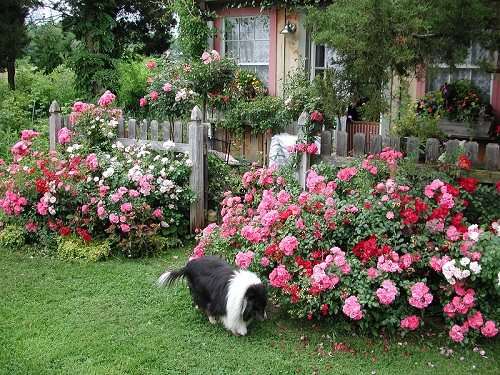

Most gardeners do not prune groundcover roses, preferring their natural fountain shape, in which the central stems stretch upward and the mature shoots tilt towards the ground. This type of roses should be pruned if there is a desire to give the bush splendor and ensure its constant flowering. The stages of spring pruning of ground cover roses are the same as for hybrid tea.
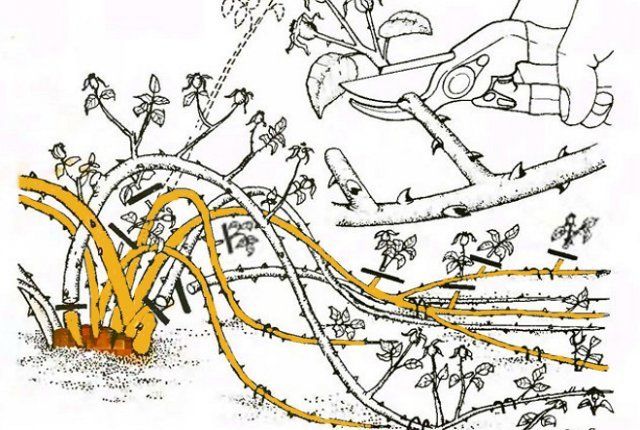

Polyanthus roses


Pruning polyanthus roses in spring is carried out in two stages:
- strong stems are shortened by a third;
- the central shoots, which will lead to thickening of the bush, are removed.
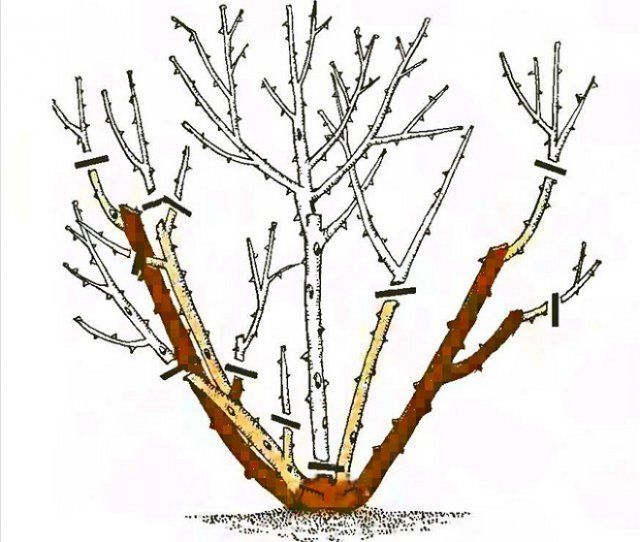

Standard varieties
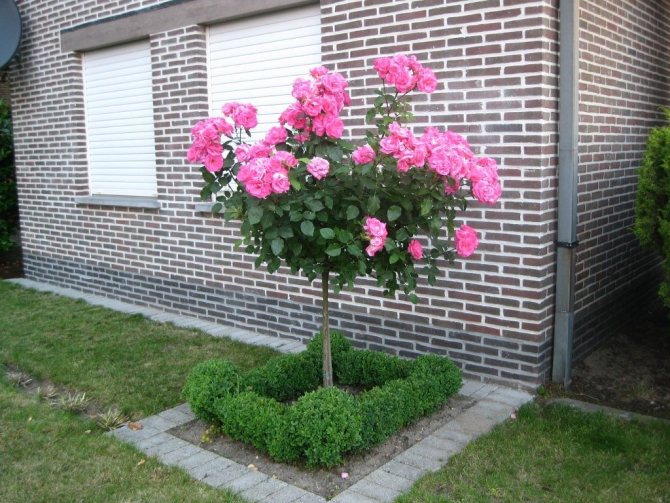

Standard roses are not a separate species or variety, as they are obtained by grafting other types of roses, for example, floribunda, hybrid tea, climbing, groundcover, to create a spectacular tree covered with flowers, to the powerful rose hip stem. This type of plant requires pruning of varying degrees , depending on age. In the year of planting, pruning should be short, no more than 15 cm from the base of the crown. Pruning of subsequent years depends on the condition of the shoots and on the type of grafted plants.
If those types of roses were grafted, the crown of which on the trunk is usually formed in the form of a ball or an inverted cone, then:
- all young shoots are cut at a height of 3-5 buds (12-15 cm from the base);
- lateral shoots are shortened at a height of 2-4 buds (8-10 cm from the base).
If climbing or ground cover roses were used as a grafting, which will give a weeping crown, then the pruning should be the same as for their bush varieties.
Young rosehip shoots growing at its base are subject to complete removal.
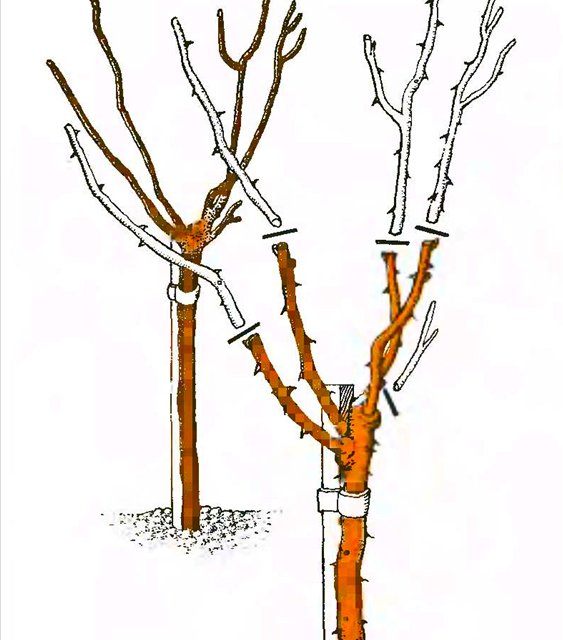

Curb rose


Competent pruning of these medium and low-growing bush rose varieties is also carried out in several stages:
- removal of diseased and damaged shoots;
- cutting off young and healthy stems at a height of 5-10 cm above the first healthy bud;
- easy shortening of lateral age shoots;
- complete cutting of wild young growth at the very base of the bush.
Video: Pruning miniature roses in spring
Park varieties


For park roses, pruning is only recommended as a rejuvenating procedure to maintain flowering and stimulate the growth of new shoots. Only damaged and incorrectly positioned stems are removed, the tops of the rest are slightly shortened.
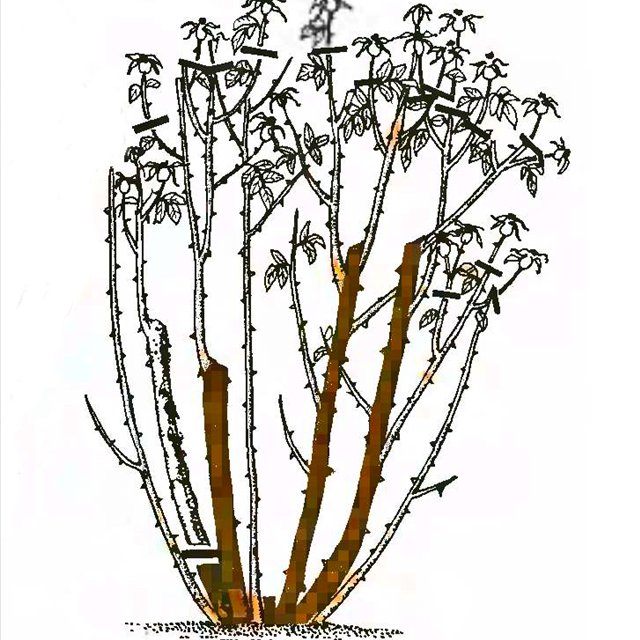

Video: Correctly prune a park rose
Indoor types of roses
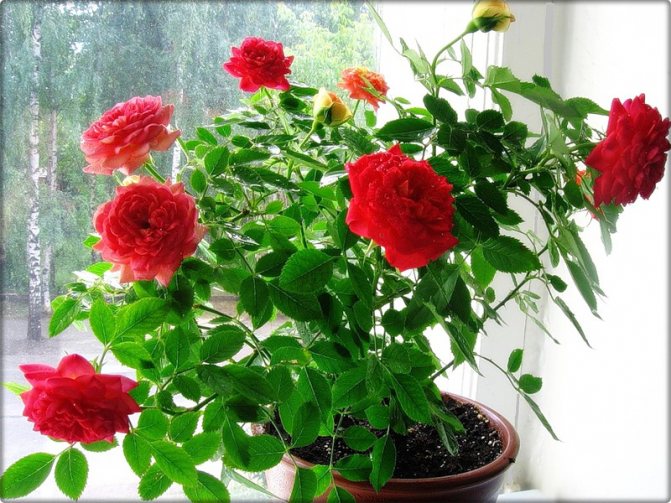

The frequency and amount of spring pruning of a room rose directly depends on its variety. The main principles will be the same for all domesticated roses:
- if the plant does not bush well and forms long single shoots, then regular light pruning of the tops will be required;
- if, on the contrary, a single plant is growing, then they try to pinch the tops to a minimum;
- in case of poor flowering, a rejuvenating radical pruning can be carried out.
When working with a healthy bush:
- weak shoots are removed, especially if their growth is directed inside the bush;
- stems with a missing apical bud are cut at the root;
- strong shoots are shortened to a length of between 3 and 6 buds.
Indoor roses are often presented as a gift on the first spring holiday. Brought from the store, they retain their beautiful appearance for a very short time, and sometimes they do not have it initially. See how you can reanimate even an already frankly diseased plant.
When and how to trim?
It is necessary to start pruning only after the probability of frost has disappeared, but the buds have not yet blossomed. It is important not to miss this moment!
First, take a close look at the roses. All branches that have grown inside the bushes need to be cut off. In this case, you will improve the ventilation of the bush and thin out the bushes.
The next step is to remove branches that have died out over the winter to living wood. The same fate must befall the damaged branches. If your bush is already old and strong, then you need to remove all frail shoots. If the bush is still weak, then it is better to leave the shoots, but shorten at least one bud. This will strengthen the plant and stimulate growth.
Please note that the pruning of roses must be such that the existing roots can feed all branches of the aboveground part. Only in this case, roses will successfully grow shoots and bloom beautifully.

